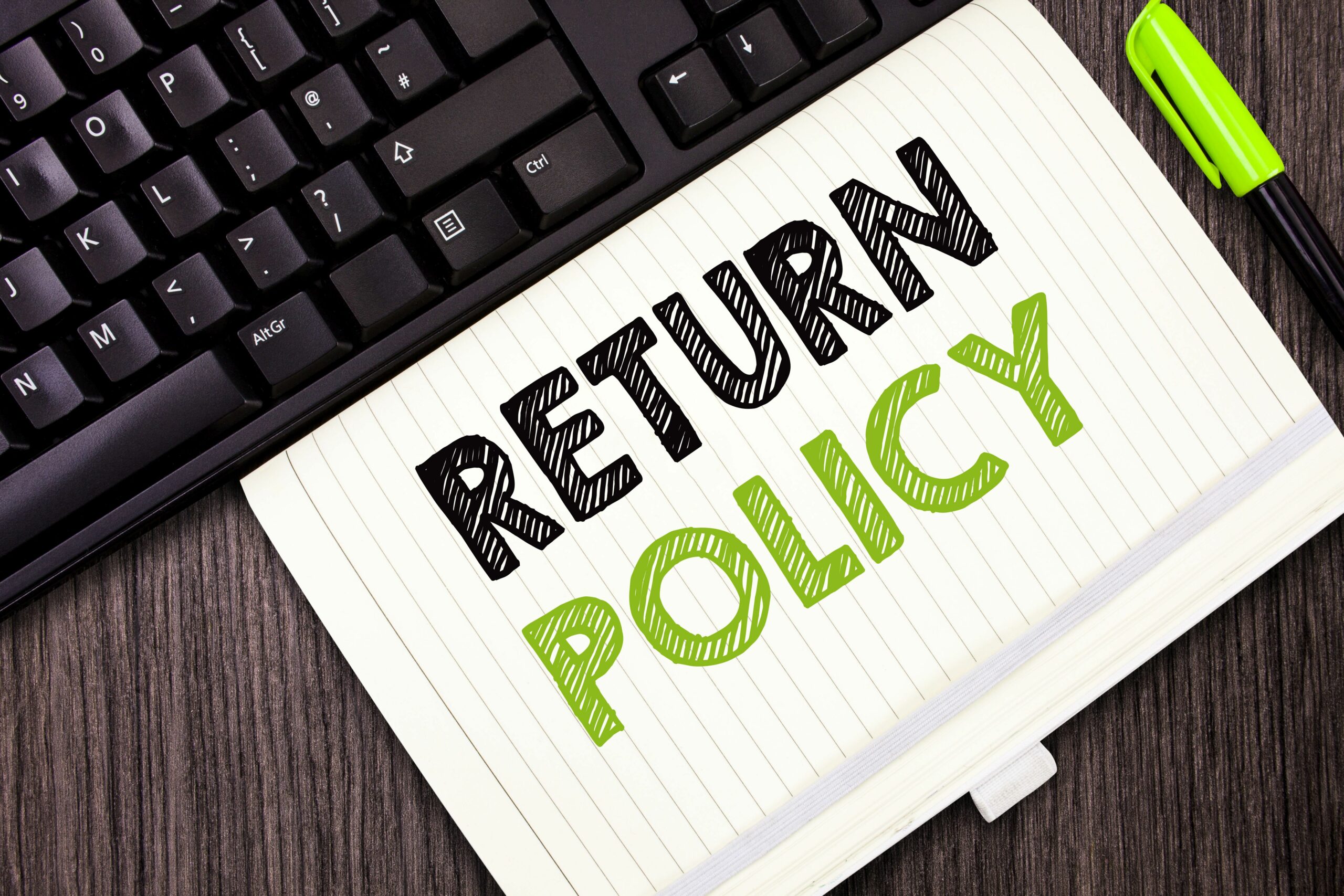
artursz/Depositphotos.com
July 25, 2025
Are ‘Just Keep It’ Return Policies Loyalty Builders?
A new study finds while the primary reason for “just keep it” return policies may be to help retailers save money by avoiding the costs involved in shipping and processing returns, they also pack a sizeable goodwill benefit.
The study from researchers at Notre Dame found “returnless returns,” or when a consumer is told to keep an item they’re seeking to return and still get a refund, can make affected consumers more likely to write positive reviews, recommend the brand, and repurchase an item.
However, the researchers found the goodwill benefit varies based on the circumstances.
Case-by-Case Returnless Returns May Be Better Than a Blanket Policy
While some brands, including Chewy and Bombas, offer a blanket returnless policies for all customers and situations, a bigger goodwill benefit is earned by those employing it on case-by-case basis, like Amazon and Walmart, because a human connection is involved and it’s a surprise.
“The consumer feels they are getting special treatment,” said John Costello — an associate professor of marketing at the University of Notre Dame, and one of the paper’s co-authors — in a statement. “Also, because they are getting human interaction rather than an automatic e-mail, the customer feels additional warmth toward the brand. So, increasing the level of ‘humanness’ in digital interactions has proven beneficial.”
How the “just keep it” benefit is explained to the customer can also elevate goodwill, especially if it leans on a “consumer or environmentally centric motive” in the response.
Among the findings:
- One experiment showed consumers seeking to return a phone charger in a returnless exchange situation were more likely to recommend a brand if they weren’t required to show proof of the problem with a product, such as showing a video or photo of the damage, to earn their refund.
- One experiment involving a shirt return in a returnless return situation found those who were told to donate the shirt to someone in need viewed the brand more favorably than participants told to dispose of it.
- One experiment involving the return of fruit found participants most likely to recommend the brand if were those told the returnless return was being made to make their lives easier in avoiding the hassle of packing up and shipping the items back. Those who were told the retailer was trying to reduced carbon emissions were the next most positive about the brand, while those told the company was seeking to reduce cut costs received the least positive comments.
“We find that brands can really benefit from returnless returns if they act more communal than transactional,” Costello told the Wall Street Journal.
A 2023 survey from returns technology provider Narvar found that 75% of customers have been offered a “keep the item” return at least once in their shopping lifetime, with Amazon, Walmart, Target, Wayfair, Chewy, Kohl’s, and Shein cited among those employing the practice.
Of the respondents, 90% who received the perk had previously shopped with that retailer and appreciated the trust expressed through the policy, while 65% appreciated that retailers are saving their time and effort by letting them keep the return.
On the flip side, 53% expressed concerns that unethical customers will abuse the “keep it” policy and drive up prices for everyone, while only 50% liked that retailers were saving costs and reducing their environmental impact through the policy.
Discussion Questions
Does the amount of goodwill engendered by ‘just keep it’ or returnless return policies offset the risk of abuse in most cases?
How would you structure such a program to limit abuse?
Poll
BrainTrust
Tom Ryan
Managing Editor, RetailWire
Recent Discussions







A customer making a genuine return no longer wants the item, so the ability to keep it offers limited benefit. The real value lies in avoiding the inconvenience of the return process – something that may drive loyalty, albeit in a costly and circuitous way. In many cases, just keep it policies are less about customer experience and more about minimizing return costs for the retailer. The risk with this is that it can unintentionally encourage undesirable behaviors in how customers place and manage online orders.
For food that you won’t eat, it’s wasteful and I really don’t like it. It’s all about not knowing what to do with it or to pay someone to pick it up. Expense Management and definitely not a loyalty builder. Just the opposite
I am making a good salary from home $1400-$2400/week , which is amazing, under a year back I was jobless in a horrible economy. I thank God every day I was blessed with these instructions and now it’s my duty to pay it forward and share it with Everyone,
.
Here is what I do…… https://rb.gy/y4j09o
With food, even if you return it they can’t resell it either though.
We trained our customers to expect free shipping. We trained our customers to expect easy and VERY liberal returns. By the way, many companies are trying to retrain customers on shipping and liberal returns. And now we’re discussing a concept that will train customers to keep what they would normally return. I think it’s dangerous to get customers used to something that is even more liberal than liberal returns – as in returnless returns. We should learn from our past and keep those thoughts in mind as we try new and potentially expensive concepts. Sometimes, what appears to be a customer-focused decision, and I like when companies think this way, can actually become a long-term problem. Think it through.
This is clearly a numbers game: i.e. it may work for some retailers – presumably those with low ticket values – but be a complete disaster for others. That having been said, I’m naturally cautious when I see a study that seems to ignore downsides and promotes benefits, particularly when the up is something nebulous like “loyalty”…didn’t we just the other day all but say loyalty is a quaint antiquity ?
The goodwill, combined with the time and effort savings of the ‘just keep it’ policy, can offset the risk of abuse if it is applied on a case-by-case rather than a blanket basis. The moment it becomes expected, it turns into an entitlement. However, the success of case-by-case decisions relies on having the necessary data infrastructure to make informed decisions. A well-structured program would incorporate a customer scoring algorithm, item value thresholds, and category restrictions. Properly designed and executed, it also serves as a loyalty-building mechanism. When customers receive unexpected perks from a retailer, they are likely to feel psychologically obligated to return the favor (reciprocity principle).
“Just keep it” is generally a bad idea because makes customers question their entire relation with the retailer. For example, if I spent $50 on a product, the whole transaction is demeaned when the retailers says “just keep it.” Keeping it tells me I was ripped off and spent too much — the exact opposite of the claim about these policies. That said, there are times when it makes sense. My father-in-law once ordered 20 shaker pegs only to receive two full bales with 1,000 pegs each. “Just keep it” made sense as they had made a mistake and return shipping was expensive. We now have many shaker peg hat and coat racks all over our home.
I like your insight.
No, they’re exactly as described…an expense management tool. I received a broken 48” outdoor patio table from Wayfair. They wanted me to send it back. Needless to say, the box was long since destroyed in the unpacking and the table (iron) way too heavy for me to take to UPS, what to speak of pay for it. Annoying
and I just canceled an Instacart order because it was delayed and I’m tired of finding melted frozen products in my freezer because they sat in the car too long. Time to start going to the store again. Their answer is “just keep it, and that extends to products I didn’t order. It’s wasteful. I don’t like it. It’s not just about the money.
Couldn’t agree more. Nothing worse than getting “stuck” with something I don’t need which is also hard to store or hard to know how to get rid of. My wife notes, though, she runs into a burgeoning auction market of such goods.
The big risk in “just keep it” is that some less-than-ethical shoppers will take advantage of it. Hopefully, that is few.
Though returning can be annoying, somehow “just keep it” seems wasteful. I’d rather return than throw away.
I’m with Paula, it’s wasteful. We return things for a reason and when the retailer says keep it, the consumer now has two problems: Something we don’t want or need, and what to do with it.
Exactly. “Something we don’t want or need, and what to do with it.”
The value here is “easy.” This makes it very simple for customers to deal with unwanted items from online retailers. For the retailers, avoiding costs associated with shipping, handling, and disposing of unwanted items is a real benefit.
And, just like store returns, there will be attempts at fraudulent returns and bad actors trying to game the system. Not a lot different from what happens to day, just a bit harder to track and monitor.
Better said than what I stated. ‘Easy’ is all about reducing friction and hassle, and building a bridge to future business with the customer. No lingering steps or continued issues for the customer and the retailer.
“Just keep it” can feel generous in the moment, but it’s usually more about avoiding return costs than building loyalty. That said, when it’s positioned around saving time or helping the customer, it can leave a good impression.
Narvar provides some legitimate data around online customer service and customer sentiment as they are supporting a number of retailers. ‘Just Keep It’ not only creates an instant level of trust with the customer, but the retailer will often encourage the customer to donate the item to a second-hand store if they don’t have a need for it. Like in person returns, abuse for online returns will come from a small sector of customers no matter the situation.
Not sure people with legitimate returns cares whether the items can be kept or not. It just shift the disposal responsible to the consumer. It may create more return fraud for certain individuals but that’s where analytics needs to be used to track individual abuse.
Returnless returns can build strong loyalty, but only when they feel personal and trust-based. Blanket policies often feel transactional. A case-by-case approach, with human interaction and a clear reason that puts the customer or community first, makes the experience feel thoughtful. That’s where the goodwill comes from. Still, programs must be designed carefully to avoid abuse.
Retail giants’ deep pockets allow them to afford this generous policy. Customers feel relieved and grateful for the convenience of skipping the need to repackage the item and go to a dropoff location.